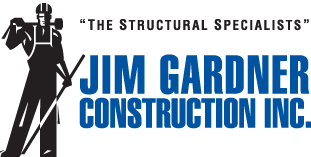One of the most common questions we get from customers is: What do foundation and drainage projects cost? If you need foundation repair or drainage work done and you live in the Bay Area, chances are you’ve gotten prices that are all over the map. And the truth is, the costs of doing foundation and drainage work can be really confusing. As is the case with a lot of structural projects, the confusion often stems from a lack of a well-defined scope of work.
In this article, we’re going to share something our competitors in our service area of Alameda, Albany, Berkeley, El Cerrito, Kensington, Oakland, Orinda, Piedmont, and San Leandro, CA wouldn’t dare put in print: cost ranges for foundation and drainage jobs! We’ll also share some insider tips for making sure you choose a contractor that doesn’t turn your dream house into a nightmare.
Let’s get started …
How Most Foundation and Drainage Repair and Replacement Jobs Start
Most foundation and drainage projects start as a result of a report created during the home purchase or after, or signs of damage or concerns either in the crawlspace (if it is easily viewed) or cracks, sloping floors, or other issues in and around the home that seem to be a sign for concern.
The actual cause of these problems usually requires a detailed crawl in the often tight, poorly accessible areas under you home- places that are often not carefully explored. During our estimates we try to look thoroughly in all the key areas under your house, since what you notice above is generally a reflection of what is happening under your house. From the structural perspective, the most common reports generated during a house sale are often poor or incomplete types of information. A few examples…
- The Home Inspection Report is highly detailed but very general.
- The Termite Report has solutions that are primarily to alleviate termite and dry-rot problems which are often poor structural solutions.
- It is rare to get a good Engineering Report on a building (because it can be expensive), and even then it is often technical and confusing. And there is very little if any good pricing associated with these.
So you know you have a problem, but you’re not exactly sure what it is or what it costs. Next, you go contractor hunting…
How Most Homeowners Choose a Contractor
Due to the fact that very few contractors are structural specialists, and most contractors doing drainage/foundation work tend to be inexperienced, you usually end up dealing with generalists who do not have a good handle on the nature of your problem. That’s not good.
And it’s even worse with drainage, because most drainage contractors lack the knowledge and experience to handle more complex drainage jobs. Then you layer on top of that the guys who are trying to sell you the version of the job they are most comfortable with (not the one that’s the best solution for you) and you end up on the “Contractor Ferris Wheel” with the ride stuck in mid-air … and eventually going downhill from there. There is a better way though–a smarter method for those of you who want your foundation to last and your house to stay dry. Let’s look into foundations and drainage separately in more detail so you can better understand what we’re talking about …
Foundation Costs
How do you even know if you need a new foundation? It’s a basic question, but surprisingly there’s not a simple answer. We evaluate foundations mostly on visual inspection and minor probing of their condition–the number of cracks, the relative size and depth of the footings, grade issues, but most importantly the relative strength of the materials. Unbeknownst to many, the real enemy for foundations is water (as it is for most construction materials).
Concrete is somewhat porous, and over many years older concrete will degrade if subject to a lot of moisture because of drainage related water. 10-20% (or so) of the older foundations we look at have concrete that is so poor you can pull chunks of it out with your hand. Clearly not a good sign if the plan is for the foundation to support your big heavy, home. And given the fact that most wet foundations last around 100 years in our service area and most of the homes were built between 1910 and 1930, and that they have little if any rebar in them, many foundations need replacement.
I grade them on a scale of 1-10. 1-2 means “you better replace it ASAP”, but beyond that it becomes more of a judgment call. 3-5 is more of a question of longevity–if you plan on living in the home for a long time, we usually recommend replacing the foundation and installing proper drainage. If a prospective customer wants get the heck out of Dodge and pass this problem on to the next person, then oftentimes they’ll pass on a big, expensive project (but this usually comes back to bite them when they try and sell the house).
Ok, now that we have that out of the way let's talk costs ...
Foundation repair and replacement costs in the Bay Area are primarily driven by the lineal footage of the foundations, but also by things such as access, exterior items next to the foundation that need to be removed and replaced to do the work (such as patios or stairs), and most importantly by the height of the foundations. Access to the site can also be an issue. If it is up on a hill 50 steps from the street the work can be much more difficult, resulting in more labor hours and a higher estimate. If you have basement walls vs a crawlspace, the height of the foundations will be another cost driver. A 6’ wall will cost 3x or so what a 2’ foundation on a level lot will cost.
In real dollars, a simple foundation replacement for a small house in the flats will typically be $30,000 – 40,000, where a larger house in the hills with a developed basement and large foundation retaining walls could be as much as $200,000. As most genealogists would tell you, “it’s all relative”. But you should be aware of these factors when considering the prices you are being given for this work. And your contractor should be able to give you a sense of how these costs are derived. If he/she can’t, that’s a big red flag.
To generalize, a large percentage of foundation projects we do fall into the $40,000 – $60,000 range, but again there are a lot of factors. Next, let’s talk drainage …
Drainage Costs
The type of drainage, its depth and location are key issues driving drainage cost. Due to the substantial presence of groundwater and the need for French Drains as well of downspout drainage, I have a tendency to recommend both elements as a part of most of my drainage quotes (unless there is an obvious surface only water problem). From experience we have learned that partial systems often fail due to water re-routing itself over time (that’s a whole different discussion), or inadequate depth of the work or improper waterproofing and poor detailing of the membrane system and piping.
French drains need to be installed below the lowest floor elevations of where the water is getting in to provide a safe long-term solution. Depending upon whether this drainage is around the entire house, or in the crawlspace and around the house, it can vary from 3’ to occasionally 10’-12’ deep in extreme cases (see our gallery at the bottom of this page for some examples). With deeper drainage work we are required to do shoring and other OSHA approved methods for providing safety in deep trenches. This requires specialized equipment, such as aluminum trench shoring, and specialized training. Not all contractors have this in place, putting their employees and you the client at risk.
And as with foundations, drainage project costs are determined by depth, access, exterior elements that need to be removed and replaced, etc. What often gets missed, but plays a big role in whether or not to do this work, is the current condition of the foundation. If the foundation is in fair condition or better, and if it could get a 20-40-year reprieve on its lifespan with good drainage rather than needing to replace in it a much nearer term without drainage, than the cost of good drainage is a great investment.
So how much do drainage projects cost?
As a general range, houses of small to mid-size with short crawlspaces and mostly dirt around them average around $35,000 for complete drainage systems. Houses with full basements and stairs and patios that need to be removed and repaired can run up to $80,000, with drainage 8’ deep all around. As is the case with foundations, jobs on hillsides can be substantially more time-consuming, leading to additional cost. Most drainage systems are hand-dug, since they need to be placed adjacent to the house foundations so that waterproofing can be effective. Small electric jackhammers are the tools of choice, but the work is labor-intensive, usually requires a large crew, and involves removing huge amounts of soil (30-50 tons of soil removed is not unusual in a drainage project).
But as with foundations, whoever is bidding the work should be able to explain how the cost is generated. Sometimes the amount of items surrounding the perimeter of the building can be substantial, with removal and replacement costing as much as the drainage work itself. In the 80K example above, we needed to replace a substantial brick over concrete staircase and landing, which is 15K of that project cost, along with portions of the rear patio.
If the contractor knows what they are doing and is honest, there should be a reasonable explanation as to how the pricing is arrived at that should make sense to you as a homeowner. If a contractor isn’t able to help you understand why a project costs what it does and explain what they’re going to do for your (large) investment in your home, then it’s time to look elsewhere.
Wrap Up
At the risk of sounding like a crazy contractor, I want you to know one very important fact: I don’t care if I get your job.
What I do care about is working with homeowners who are willing to do what it takes to implement a long-term solution to foundation and drainage issues. I don’t want to come back and fix your job 5 years from now because it didn’t last. This is particularly true with drainage, because drainage patterns change and partial solutions often prove to be ineffective over time as water will re-route itself as ground conditions change and will lead to other water issues where they weren’t previously.
With drainage and foundation work though, choose your contractor wisely. Ask questions. Talk to other clients of theirs who had similar issues. And most importantly, make sure they’ve done this type of work before (a lot of it). If you have a foundation/drainage project and you live in Berkeley, Oakland, Piedmont, or Alameda, fill out our Estimate Request form and let’s see if we’re the right fit for your job. If you are getting a lot of different answers and getting confused as to what to do, it is generally because the contractors don’t know the answers and are guessing. Most structural repairs are done by General Contractors without substantial experience or knowledge in this area. 90% of the jobs I look at generally have one way to do them right.



